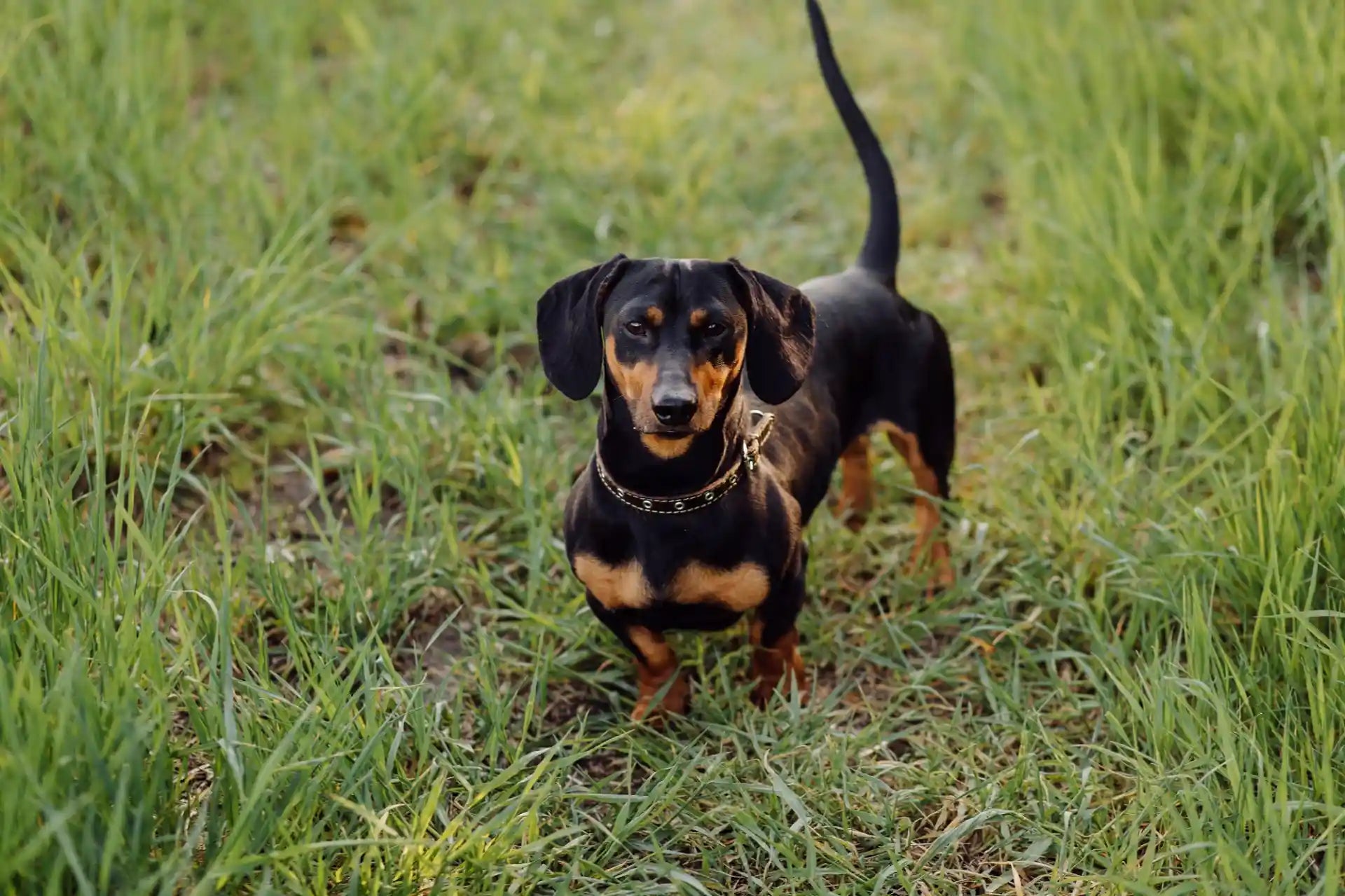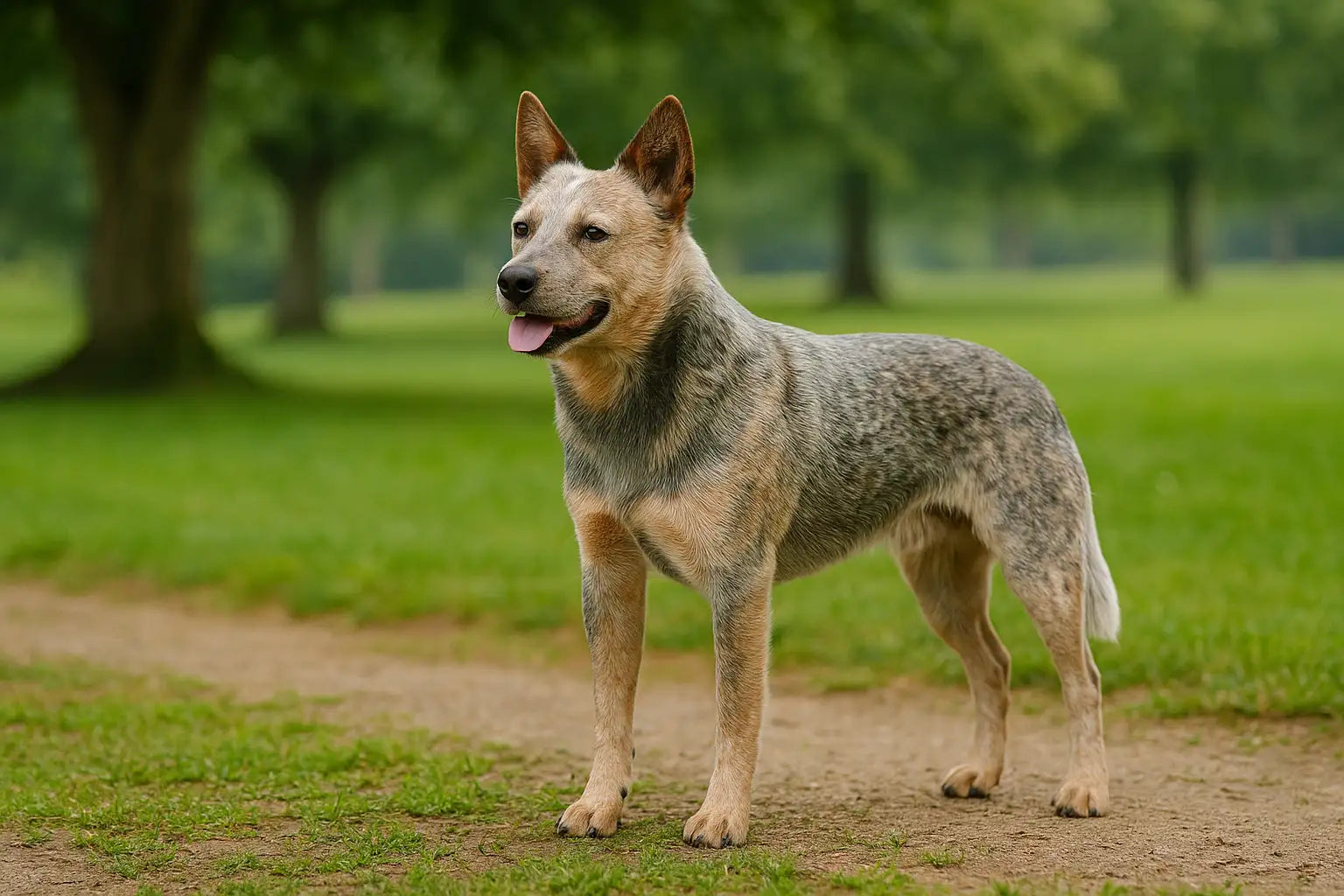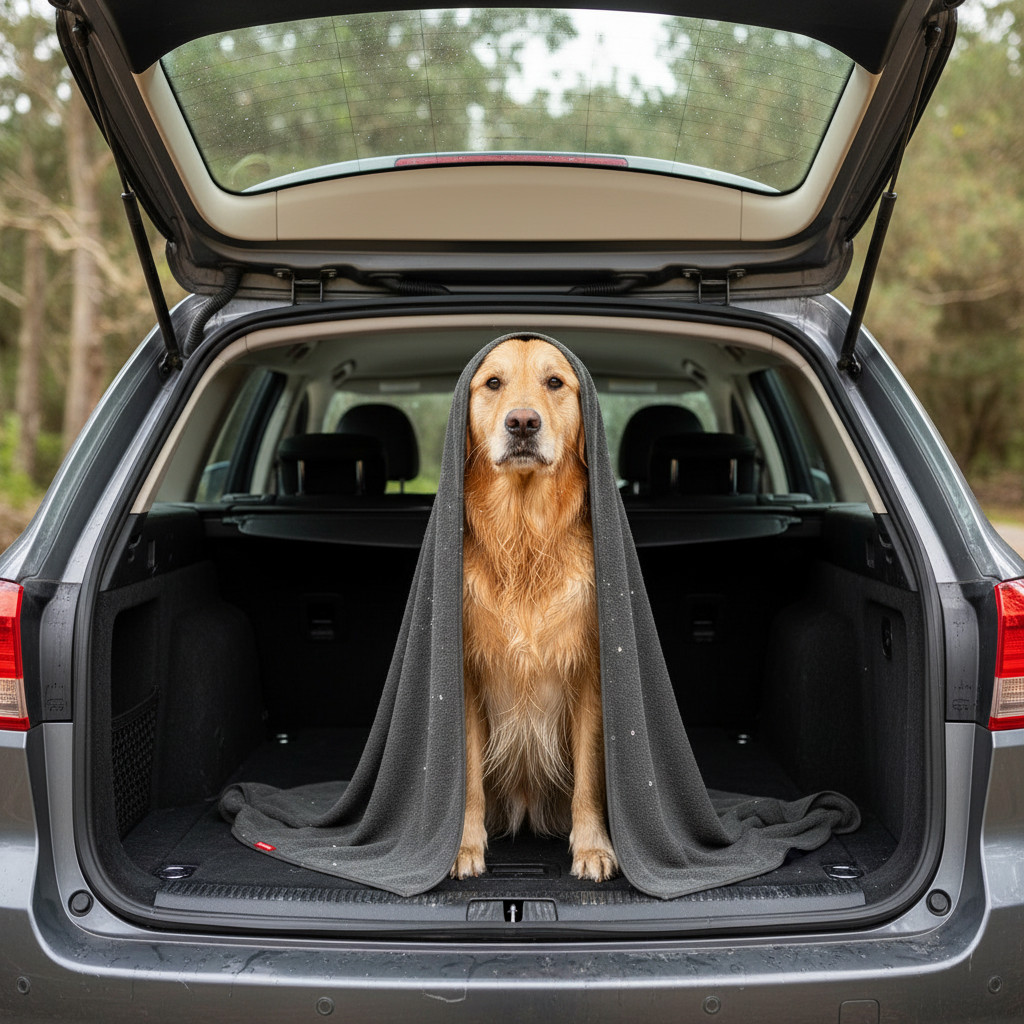
Miniature Dachshund: Complete Care & Training Guide!
Quick Facts Overview
|
Trait |
Details |
|
Size Category |
Small |
|
Height & Weight |
Height: 13–18 cm; Weight: 3.5–5 kg |
|
Coat Type & Colours |
Smooth, long-haired, or wire-haired; various colours like red, black & tan, chocolate |
|
Energy Level |
Moderate |
|
Origin |
Germany |
|
Grooming Needs |
Low to Moderate (depends on coat type) |
|
Temperament |
Brave, affectionate, independent, playful |
|
Trainability |
Moderate |
|
Compatibility |
Great for families, singles, and apartment living |
|
Lifespan |
12–16 years |
Breed Origins and History
When you look at a Miniature Dachshund, it’s easy to see traces of their proud history. The Miniature Dachshund is a smaller version of the standard Dachshund, originally bred in Germany.
Miniatures were developed to hunt smaller prey like rabbits and hares. Their compact size, long body, and courageous spirit made them excellent underground hunters. Today, Miniature Dachshunds are adored around the world for their loyalty, charm, and unmistakable sausage-dog look.
Personality and Temperament
Miniature Dachshunds may be small in size, but their personality is anything but. They are bold and full of life, making every day with them an adventure. They have the heart of a much bigger dog packed into a small frame.
Affectionate with family, playful, and often cheeky, these little dogs thrive on attention and companionship. While they’re friendly with those they know, they can be a bit cautious with strangers. Their temperament varies slightly with coat type—long-haired varieties are usually a bit calmer, while wire-haired ones can be more mischievous.
Trainability and Intelligence
Training a Miniature Dachshund can be as rewarding as it is amusing. These dogs are clever but can be a little stubborn, requiring a thoughtful approach.
They love to learn new tricks and commands, but only when they find the experience fun and rewarding. Consistent, positive training works best, and early socialisation is essential to help them grow into well-mannered companions.
-
Best trained with treats, toys, and plenty of praise
-
Early exposure to new people, pets, and environments helps social development
-
Short, fun training sessions keep them engaged
-
A comfortable training harness provides safe control without strain on their delicate backs
-
A treat bag is perfect for rewarding good behaviour on walks
Exercise and Activity Requirements
Though small, Miniature Dachshunds need regular exercise to stay healthy and happy.
-
Aim for 30 minutes of exercise daily
-
Enjoy short walks, supervised play, and mental stimulation games
-
Avoid activities involving lots of jumping or stair climbing to protect their spine
-
A hands-free lead makes outings more convenient
-
Puzzle toys and scent games help keep their mind sharp
Physical Characteristics
Miniature Dachshunds are instantly recognisable with their long body, short legs, and alert expression.
-
Height: 13–18 cm
-
Weight: 3.5–5 kg
-
Length: Typically 30–40 cm from chest to rear
-
Coat types: Smooth, long-haired, wire-haired
-
Common colours: Red, black & tan, chocolate, dapple
-
Best fitted with small dog gear
Full Grown Miniature Dachshund Size
Miniature Dachshunds usually reach their full height and weight by 10–12 months of age. Mentally, they continue maturing up to about 18 months.
Miniature Dachshund vs Standard Dachshund
The main difference between a Standard Dachshund and a Miniature Dachshund is size. Miniatures weigh under 5 kg, while Standards can weigh up to 14 kg. Miniatures were bred for hunting smaller prey, while Standards tackled larger animals like badgers.
Living Environment Suitability
Miniature Dachshunds adapt well to various living spaces, making them a great choice for apartments or houses.
-
Perfect for apartment or small-home living
-
Enjoy close companionship and family time
-
Benefit from ramps to furniture to avoid spinal injuries
-
Sleep soundly on an orthopaedic dog bed
-
Travel safely secured in a car harness
Grooming and Maintenance
Their grooming needs depend on their coat type but are generally manageable.
-
Smooth-coated: Quick weekly brush and occasional baths
-
Long-haired: Brush 2–3 times a week to avoid tangles
-
Wire-haired: Regular trimming or hand-stripping
-
Regular nail trims and ear cleaning are essential
-
A gentle soft collar suits their fine coat
Common Health Issues
Miniature Dachshunds are prone to some health issues, mainly due to their elongated spine.
-
Common concerns: IVDD (intervertebral disc disease), obesity, dental problems
-
Maintain a healthy weight and prevent high-impact activities
-
Orthopaedic support like a quality dog bed can help reduce joint strain
-
Always lift a Dachshund carefully, supporting both their chest and rear to prevent spinal injuries.
Diet and Feeding Guidelines
Miniature Dachshunds need a balanced diet tailored to their size and energy levels.
-
Puppies: Feed 3 times a day
-
Adults: Feed 2 times daily, adjusting portions to avoid obesity
-
Choose small-breed dog food rich in joint-support nutrients
-
Ensure constant access to fresh water
-
Portable food and water bowls are useful for outings
Teacup Miniature Dachshund
You might hear about "teacup" Miniature Dachshunds, but be cautious. This term usually refers to extremely undersized Dachshunds, often bred unethically. These dogs can have serious health problems, including fragile bones, heart defects, and higher risks for IVDD. Always choose reputable breeders focused on health.
Compatibility with People and Other Pets
Miniature Dachshunds are loving and loyal companions who enjoy being part of the family.
-
Fantastic with adults and older children
-
Early socialisation helps them live peacefully with other dogs
-
May chase smaller pets due to their hunting instincts
-
A coupler lead makes multi-dog walks easy
Behavioural Issues and Management
Their lively spirit means they can develop strong habits if not guided properly.
-
Barking: Natural watchdogs but can be trained to control excessive barking
-
Stubbornness: Consistent training from a young age helps
-
Separation anxiety: Gradually build their confidence when alone
-
A no-pull harness makes walks safer and more enjoyable
-
Rotate interactive toys to keep boredom at bay
Essential Gear for Miniature Dachshunds
For Walking and Training
For Comfort and Safety
For Fun and Enrichment
FAQs: Miniature Dachshund
1. Are Mini Dachshunds good pets?
Miniature Dachshunds make loyal and affectionate companions. They are playful, spirited, and often form strong bonds with their families. However, they can also be stubborn and independent, so early training and socialisation are important for a well-adjusted pet.
2. Do Mini Dachshunds bark a lot?
Yes, Miniature Dachshunds can be quite vocal. They were bred to be alert and are quick to sound the alarm at unfamiliar sights or sounds. Training and mental stimulation can help manage excessive barking.
3. What are the cons of a Miniature Dachshund?
Miniature Dachshunds can be stubborn, bark a lot, and may suffer from back problems due to their long bodies. They can also be prone to separation anxiety if left alone for long periods. Consistent training, proper handling, and a stable routine are important.
4. How expensive are Miniature Dachshunds?
In Australia, Miniature Dachshund puppies typically range from $3,000 to $5,500, depending on the breeder, pedigree, and colour variations. Dogs from health-tested parents and reputable breeders usually cost more but come with greater peace of mind.
5. How long can Miniature Dachshunds be left alone?
Miniature Dachshunds prefer company and do not like being left alone for long periods. While some may tolerate short absences, regular long hours alone can lead to anxiety or destructive behaviour. Having interactive toys or arranging for a pet sitter can help.
6. Are Mini Dachshunds high maintenance?
They are moderate in terms of maintenance. They need regular brushing, particularly long-haired varieties, and consistent dental care. Exercise needs are moderate, but mental stimulation is important to prevent boredom.
7. Do Mini Dachshunds have health problems?
Miniature Dachshunds are prone to back issues, particularly intervertebral disc disease (IVDD), due to their long spines. They can also face dental problems and obesity if not properly managed with diet and exercise. Preventative care is crucial.
8. What is the lifespan of a Miniature Dachshunds?
Miniature Dachshunds generally live between 12 to 16 years. With a healthy diet, proper exercise, and regular vet care, they can enjoy a long and happy life well into their senior years.
9. Are Mini Dachshunds yappy?
They can be. Mini Dachshunds are confident and expressive, often using barking to communicate excitement, boredom, or alertness. Early training and providing plenty of enrichment activities can reduce unnecessary barking.
10. Are Mini Dachshunds difficult to train?
They are intelligent but can be stubborn, which can make training a challenge at times. Short, fun, and consistent training sessions using positive reinforcement work best with Miniature Dachshunds.
11. How big will a Miniature Dachshund get?
An adult Miniature Dachshund typically weighs between 4 and 5 kilograms and stands about 13 to 18 centimetres tall at the shoulder. Despite their small size, they are sturdy and full of personality.
Final Thoughts
The Miniature Dachshund is a big-hearted companion wrapped in a small, spunky body. With their bold nature, loyalty, and playful attitude, they bring endless joy to their families.
Looking for the best gear to match your Miniature Dachshund’s lively spirit?
Visit EzyDog for harnesses, beds, and travel essentials designed for small but mighty dogs like the Mini Dachshund.





Leave a comment
This site is protected by hCaptcha and the hCaptcha Privacy Policy and Terms of Service apply.